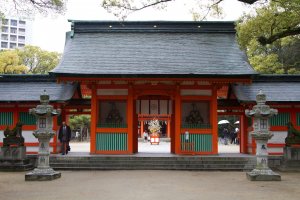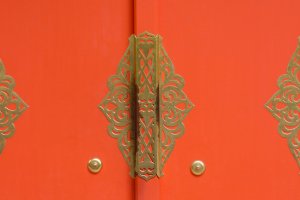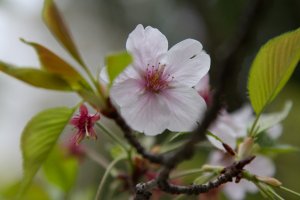Friends kept telling me how fantastic Fukuoka City is, about its great atmosphere, its genuinely friendly people and the food of course. For some reason I had only considered it as my gateway to Northern Kyushu, but after two days in this very cool and relaxed city I was in love. Here is my itinerary of the Hakata area, the old port and merchant district. For more detailed information about the individual places please check out the links:
We stayed at Costel Minoshima, a small stylish hostel a little south of Hakata Station on the charming Minoshima Market Street, also referred to as the “Kitchen of Hakata.” There were many old-established little shops, mainly selling fresh produce, and sampling the local food for breakfast was a great way to start our day. However, if you are more into eggs & toast and coffee, check out the Royal Host opposite Sumiyoshi Shrine; they offer an excellent and inexpensive breakfast, free coffee refills included.
Energy levels refilled, we headed over to Sumiyoshi Shrine, a major shrine dedicated to safe travels by sea. The shrine grounds were beautiful, calm and peaceful and we even got to see some late cherry blossoms. My personal highlight however, was the garden just around the corner: Rakusui-en, a tiny but perfectly arranged Japanese garden. Don't miss the koi carp!
Leaving the peaceful shrine and garden behind, we changed scenes when moving on to Canal City Hakata, a huge and architecturally interesting commercial complex. Some call it futuristic, fancy and yes, definitely colorful. As far as I am concerned, I guess it was futuristic in the 1960s, but today? Anyway, it is worth a stroll, even if you are not so much in a shopping mood.
Completely changing scenes again, we moved on to the temples further north: Joten-ji, Tocho-ji and Shofuku-ji. Who said that Fukuoka didn’t have many great sights? It’s actually too many to do all in one day. My personal favorite was Joten-ji, the birthplace of udon and soba noodles. The famous festival Hakata Gion Yamakasa is also said to have started here. Although it wasn’t possible to enter the buildings, the overall design of the place truly impressed me and the stone garden was simply stunning. The grounds actually looked a bit unassuming and quite small from the street, but they weren't; every building had its own impeccably designed space. Tocho-ji, the next temple, is famous for its giant seated wooden Buddha, the largest of this type in Japan, and Shofuku-ji is Japan’s oldest Zen temple. You see, the choice is all yours.
Not far away from the temple area we stopped at the Hakata Machiya Folk Museum. The two things that impressed me most were the demonstration of traditional weaving techniques (the house used to be a textile factory) and a fantastic video about Hakata’s festivals. Although it is certainly not comparable to the original experience, it did give me a much better idea of the course of action and the atmosphere of these festivals.
To end our day Fukuoka style, we had some wonderful ramen (finally!) at one of those mobile food stands (yatai) and it was as good as we were told. Other yatai areas are in Tenjin and Nagahama I believe; however, we found quite a few along the river in Nakasu, right between Hakata and Tenjin, and it couldn’t have been a better finish—still thinking of it.
If you visit Fukuoka, I highly recommend the free English language “Visitor’s Guide” from the tourist information inside Hakata Station. It has lots of useful information including good area maps; and by the way, Fukuoka is very advanced in terms of free Wi-Fi around the city.
Enjoy your trip, and I would love to hear about your favorite spots. Let me know!



































